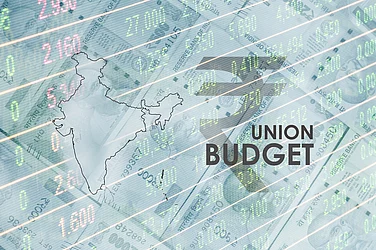The news around the rise in taxpayer base as well as tax collection a few days ago was something to cheer about. According to the figures released by the Finance Ministry, a total of 2.82 crore people filed returns, compared to 2.26 crore last year – a rise of nearly 25 per cent. Even advance tax collections showed a healthy increase of almost 42 per cent. Like every statistical outcome, this one too hides as much as it glosses over. For instance, the period for which the details have been shared includes the demonetisation phase as well as the period when the pay commission payout happened, along with the voluntary declaration of income thrown open for people to report.
Advertisement
Moreover, the government is closing loops on tax avoidance, leaving very little room for those who fall under the tax net to escape paying of income taxes. In that sense, the numbers are very attractive, but without the details of how many taxpayers form which segment of the tax slab; it does not tell you beyond the basic. The period is also one when no aggressive tax laws were introduced which would indicate the significantly higher tax collection. That the compliance has grown is good news for honest taxpayers, who always doubt the many non payers and how they have been getting away.
Advertisement
Conflicting data
According to data from the tax authorities, 11 lakh duplicate PANs were deactivated in this same period. Yet, there are more than 20 crore PANs which pales the entire data on 2.82 crore people filing tax returns or the rise in taxpayers going up by 25 per cent. There is a difference between tax filing and paying taxes, if the addition in number of taxpayers is on the account of opening of several Jan-Dhan accounts, which opened in the past one year, and many of them finding the demonetised money flown into them; chances of these accounts completing the loop by filing tax returns is high.
So, unless the data clearly shows who these extra IT return filers are and which tax bracket they fall under, the data is pretty much a stat and no more. The same logic applies for even some other taxpayers, who would have deposited cash into their bank accounts and automatically have incomes in the Rs 2.5-3 lakh slab, making them file tax returns. Yes, there is an increase in tax collection too, which is again a result of demonetisation, pay commission arrears and increase in tax compliance. But, this may not be the case next year, when the lowest tax bracket would attract 5 per cent tax rate instead of the current 10 per cent rate.
Advertisement
Unless there is a consistent year-on-year increase in the taxpayer base and tax collection, which should be the case in a growing economy, there is little to cheer about this data released by the government. Last month, using the information received through Statement of Financial Transactions from banks and financial institutions in the second phase of ‘Operation Clean Money’, the Income Tax department had identified 5.56 lakh individuals whose tax profiles were inconsistent with the cash deposits made by them after demonetisation. Another 1.04 lakh persons, who did not disclose all bank accounts during e-verification in the first phase of Operation Clean Money, were also identified by the tax department.
Advertisement
These are indications of scope for increase in taxpayers in the future; however, the number is still far from the number of PANs issued. One aspect that could change the complexion of taxpayers is the linking of Aadhaar with PAN, which could substantially increase the compliance with tax filing and payments. Until then, any stats on increase in tax filing and tax returns are a mathematical figure, which just indicates the growth in number of new entrants into the job market. Unless the bridge between taxpayers and PAN holders narrows, we will continue to watch the rising number of taxpayers and increase in filing each passing year.















 Just one email a week
Just one email a week